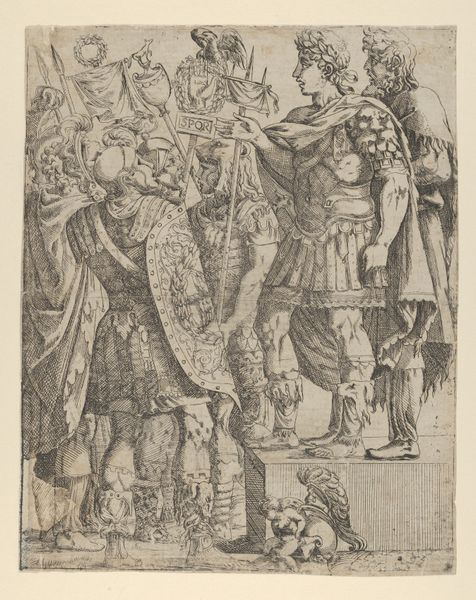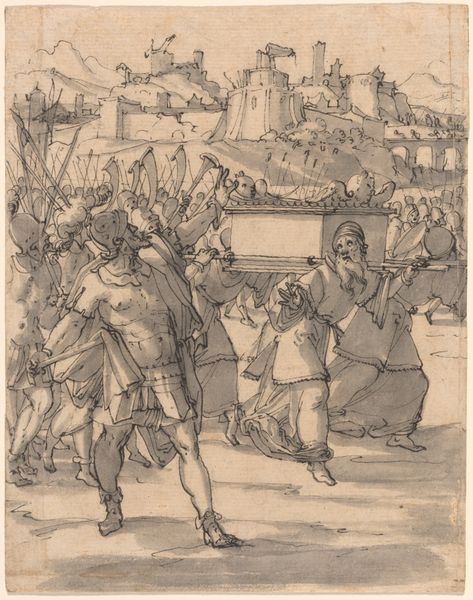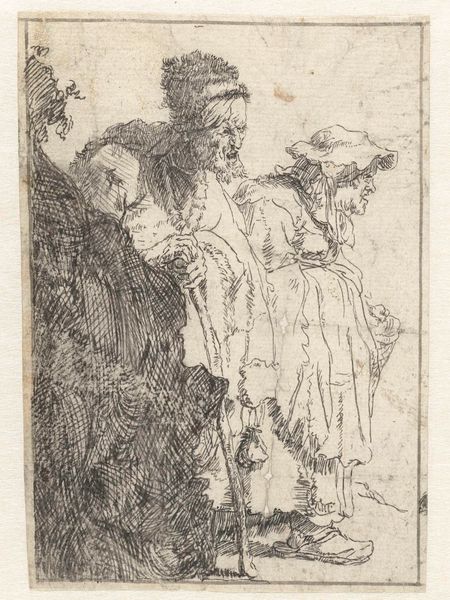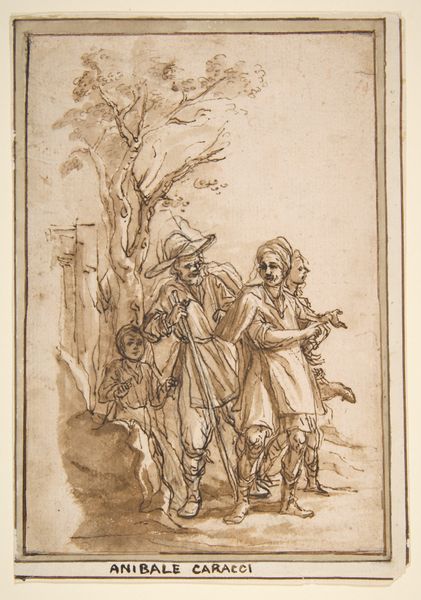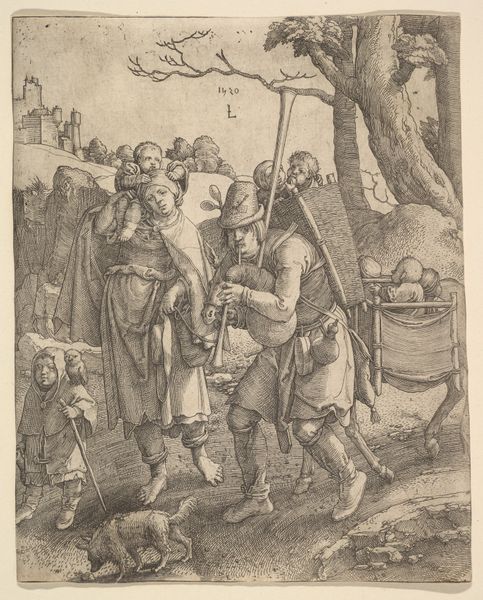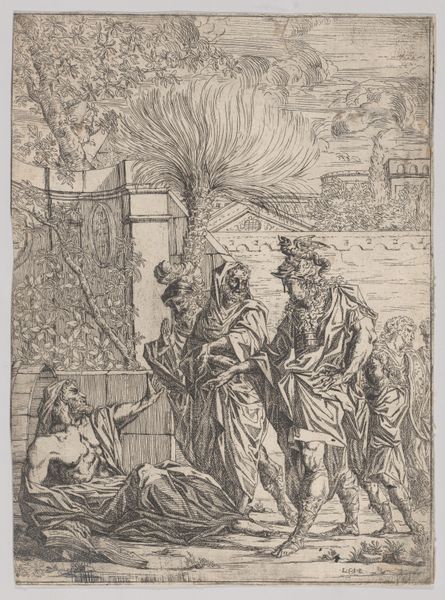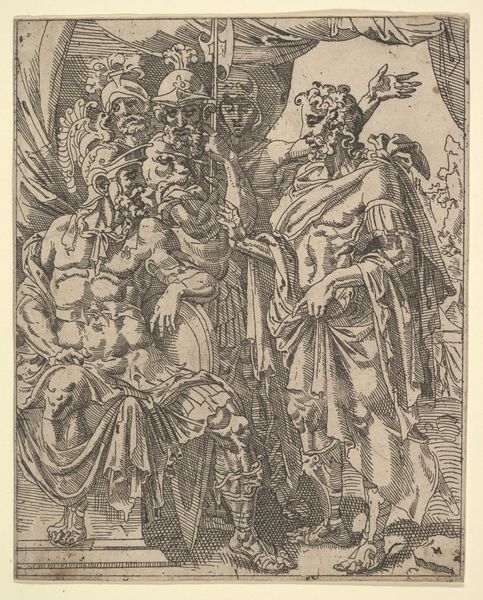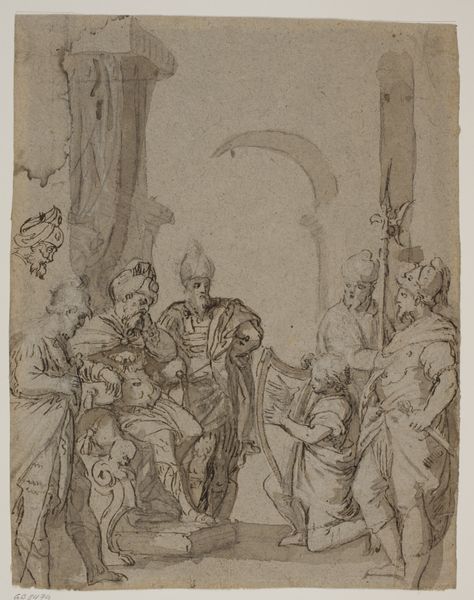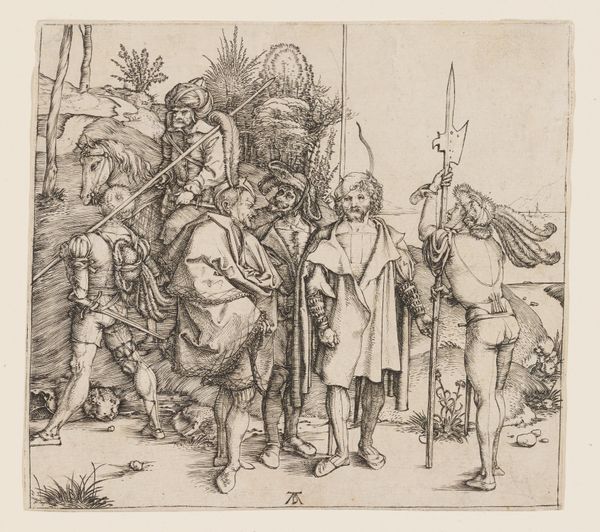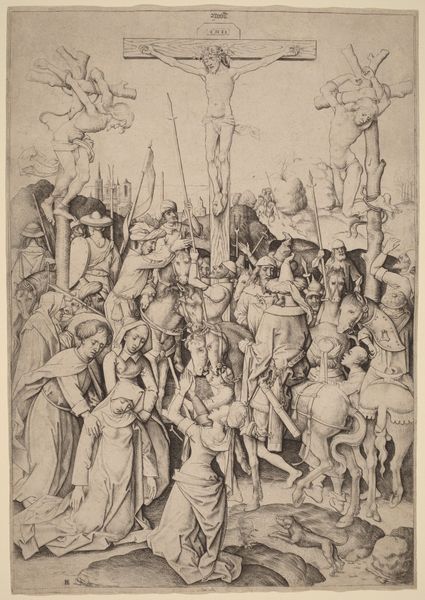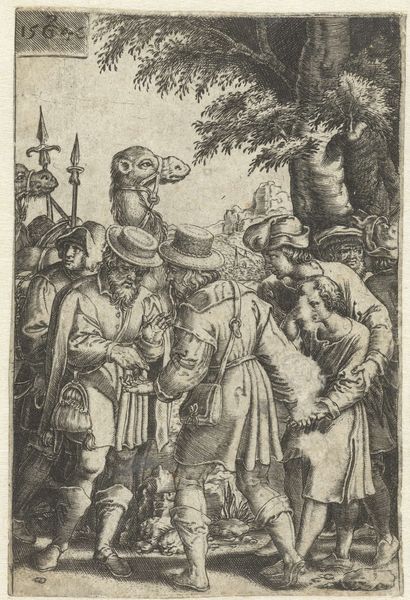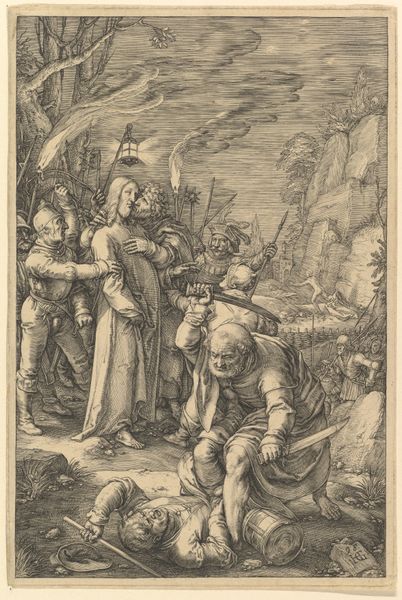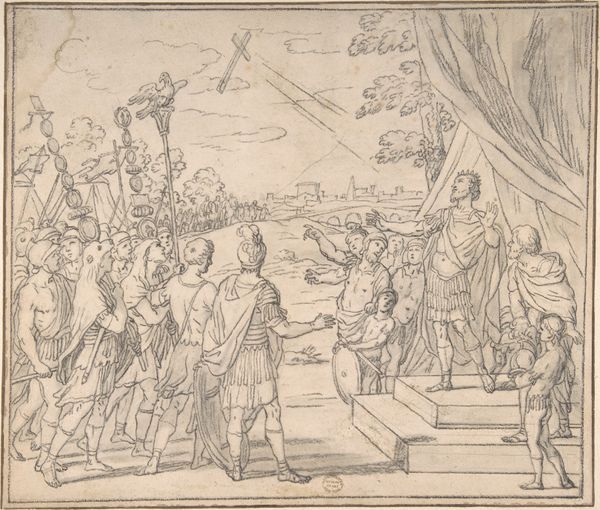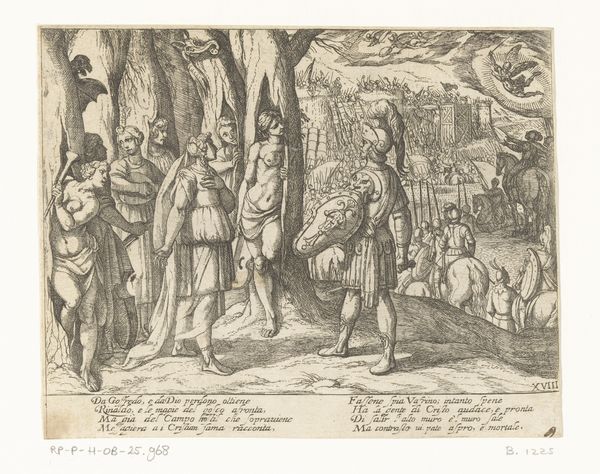
drawing, print, etching
#
drawing
# print
#
etching
#
landscape
#
ancient-egyptian-art
#
figuration
#
ancient-mediterranean
#
history-painting
Dimensions: 8 7/8 x 7 in. (22.6 x 17.8 cm)
Copyright: Public Domain
Curator: This etching, "Procession at Memphis," thought to be by Michel François Dandré-Bardon, dating to the 18th century, transports us to a historically-inspired landscape. It currently resides here at The Met. Editor: Immediately, I’m struck by the overwhelming sepia tones. There’s an intriguing weight in this, a somewhat melancholic feeling perhaps amplified by the detailed linework creating such intricate figures and forms. Curator: It’s fascinating how the artist uses line to create depth and texture. Notice the cross-hatching technique, creating shadows that sculpt the figures and structures. Editor: Exactly, but this aesthetic presentation seems to be at odds with a more complex legacy, doesn’t it? An 18th-century artist depicting ancient Egypt. It speaks volumes about appropriation, cultural exchange, and colonialist interests shaping artistic narratives. How did Dandré-Bardon’s cultural background affect how he interpreted Memphis, and, even, what he chose to depict? Curator: I see it more as a formal dialogue. Consider the pyramidal shape, repeated in miniature and on a large scale—echoes that build a visual language based on geometrical structures, so fundamental to the Egyptian aesthetic and artistic interpretation. Editor: Perhaps. Yet shouldn't we ask whose voices are being centered in these depictions? Is Dandré-Bardon creating cultural understanding, or perpetuating exoticism? Curator: But the work itself, independent of the cultural conversation, is a sophisticated use of line. The arrangement of figures leads your eye. Notice the balance between light and shadow that is rendered through the linework—an elegant contrast to create mood. Editor: And while I can acknowledge this use of line, to ignore this work’s position as the interpretation of the culture it depicts seems dismissive. Can we, responsibly, ignore the politics inherent in a depiction such as this? Curator: It allows for multiple readings and provokes discussion! To observe how the past and present influence visual expression is what is valuable. Editor: Indeed. This work serves as a reminder of art's role not only in mirroring but also in actively shaping historical perceptions and continuing dialogues surrounding cultural representation.
Comments
No comments
Be the first to comment and join the conversation on the ultimate creative platform.
